13 Ways to Lose Stubborn Belly Fat For Good
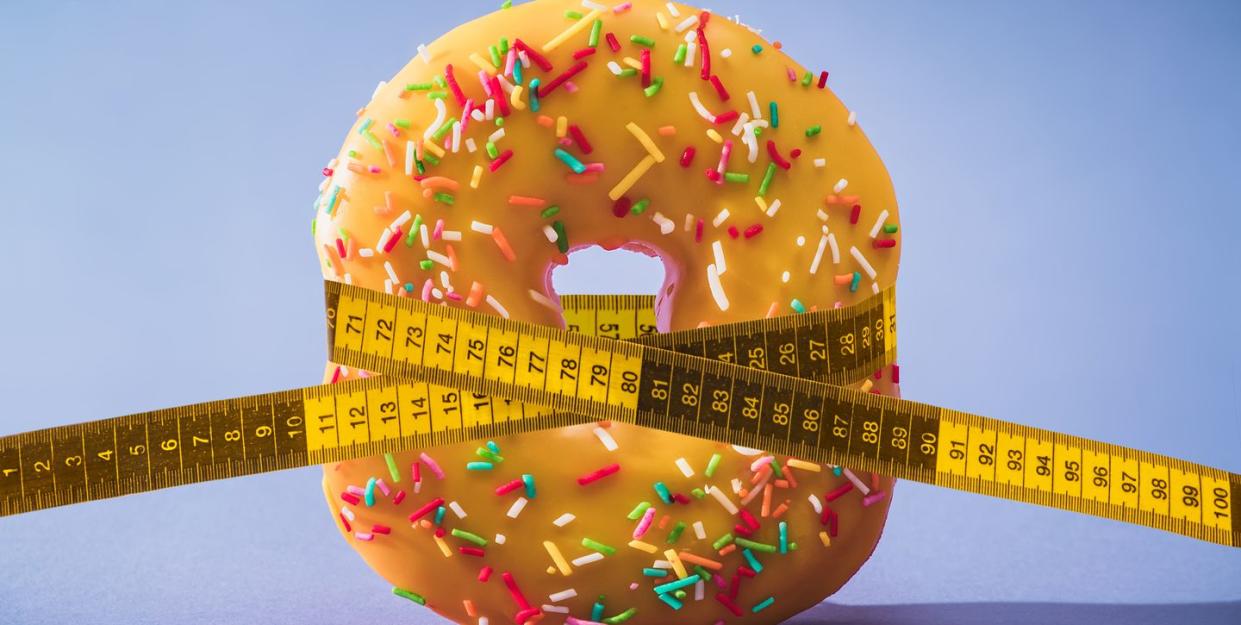
Belly fat is maligned for its way of tampering with any outfit that doesn’t involve a muumuu, but really there’s something way worse about the stuff: When white fat expands in your abdomen, nestling deep among your organs, it sets you up for some serious health trouble.
We now know that this type of fat, called visceral fat, is metabolically active and churns out stress hormones like cortisol and inflammatory substances called cytokines that affect you body’s production of insulin. The result is worse than just being generally overweight; you’re looking at increased risks of type 2 diabetes, high blood pressure, high cholesterol, heart disease, stroke, some cancers, and even dementia.
Unfortunately, some women are just more prone to carrying weight in their middle instead of their hips and thighs. Sometimes, it’s genetics-maybe your mother was more apple-shaped. Belly fat can also increase around menopause, or for women who have polycystic ovary syndrome (PCOS). Even certain lifestyle habits, from lack of sleep to stress, can make your belly grow. To lose belly fat, talking with a doctor about what other factors may be affecting your weight gain can be a good place to start. From there, you can craft a belly fat busting routine.
The problem? You can’t spot reduce fat.
But don’t lose hope just yet. You can still incorporate strategies that help you lose total body fat, which will benefit your belly. At the end of the day, nothing sheds belly fat like diet, exercise, and everyday changes to your lifestyle. The slimmer stomach of your dreams is always within reach, but it takes time and dedication. Commit to these habits, and you’ll start dropping pounds before you know it.
Burn it off with high-intensity cardio

There’s one thing to like about visceral fat: It yields fairly easily to aerobic exercise. Vaporizing calories via running, biking, swimming-anything that gets your heart rate up-is an effective way to whittle your middle. In fact, one 2011 study from Duke University Medical Center, published in the American Journal of Physiology, found the sweet spot: Jogging the equivalent of 12 miles a week was even more effective in reducing visceral fat than resistance training three times per week. However, both types of exercise were beneficial when it came to belly fat, the researchers say. (Don’t have time to hit the gym? Try these fun at-home cardio workouts if you’re in a pinch.)
Work up a sweat with weights

Sure, high-intensity cardio can help you torch calories, but ideally, you’ll also need to pump some iron to build metabolism-boosting muscle. That’s because strength training is one of the few activities you can do to spike the amount of calories you burn, even after you’re done with your workout. Case in point: one 2012 review of research found that while completing a 20-minute resistance training circuit may help you burn 200 calories, your body’s resting metabolic rate stays elevated for the next hour, helping you burn an additional 50 calories. Plus, when you lose weight, you lose some muscle with it, so building and maintaining that lean mass will help you achieve a more toned look.
Again, you can’t spot reduce fat, but you can add full-body circuits to your exercise routine to train problem areas and maximize fat loss all over, which will ultimately help you achieve a leaner core. Don’t know where to start? Check out the six best strength training exercises for beginners.
Take a daily walk
[asset removed due to syndication rights]
Dedicating a few days a week to a challenging workout is important, but the movement shouldn’t stop there. Think about it: exercising for one hour of your day really isn’t going to make up for the eight hours you spend sitting at your desk at work, especially if fat loss is your end game.
One easy way to sneak in more movement? Go for a daily walk. One small study published in The Journal of Exercise Nutrition & Biochemistry found that obese women who did a walking program for 50 to 70 minutes three days per week for 12 weeks significantly slashed their visceral fat compared to a sedentary control group.
“It seems so simple, but 45 to 60 minutes of brisk walking every day can do wonders for your metabolism,” Sahmura Gonzalez, a master trainer at Crunch Fitness in New York City, recently told Prevention. “Plus, it ensures that you don’t over-train, which can lead to an over-production of cortisol-a stress hormone that’s been shown to contribute to belly fat.”
Eat protein like you mean it
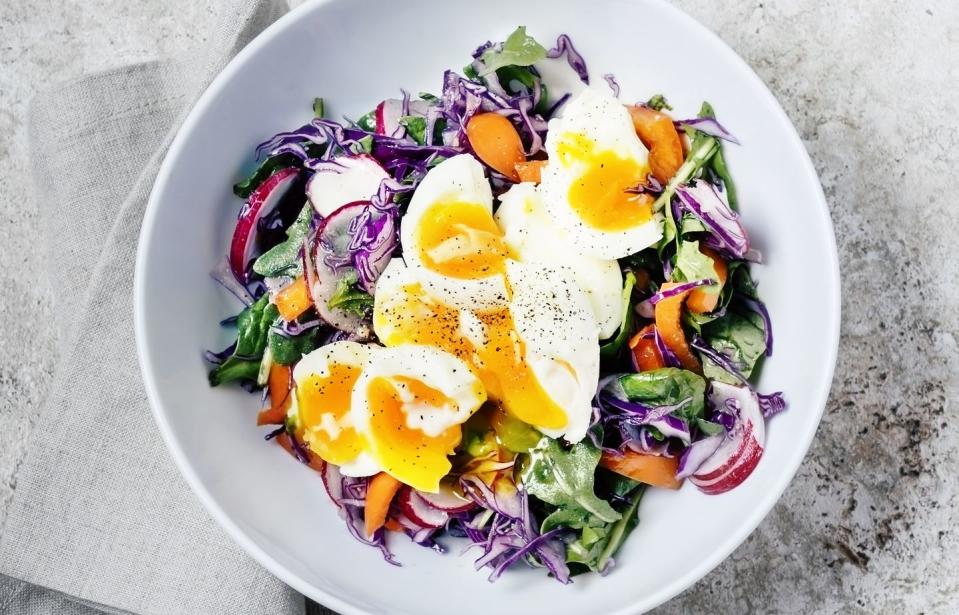
You’re always told that chicken and Greek yogurt and eggs are amazing because they’re high in protein-but why exactly is that such a big deal? For one, your body relies on protein (since its rich in essential amino acids) to help repair the tiny tears caused by strength training in your muscle tissues, so they can grow bigger and stronger.
What’s more, your body digests protein more slowly than carbs, so it keeps you feeling fuller longer and zaps your need to needlessly snack. “During weight loss, you want more protein-to prevent hunger, enhance satiety, and minimize muscle loss, as long as there’s some degree of physical activity,” Tom Rifai, MD, regional medical director of metabolic health and weight management for the Henry Ford Health System in Detroit told Prevention.
Science backs these ideas up when it comes shedding belly fat: In one study published in The Journal of Nutrition, researchers had overweight men and women follow a high-protein diet (30 percent protein, 40 percent carbs, and 30 percent fat) or a high-carb diet (15 percent protein, 55 percent carbs, and 30 percent fat). After one year of weight loss and maintenance, they found that the high-protein group experienced a 21 percent greater weight loss and 27 percent greater body fat loss on average than the high-carb group.
One easy way to up your protein intake is to add organic protein powder to your smoothies, meals, or snacks that are otherwise low in the muscle-building nutrient. Make sure you keep your fridge stocked with high protein foods-like cottage cheese, fish, and lentils-too.
Choose the right fats

Saturated fats in food will pack on more visceral fat than polyunsaturated ones, according to a 2014 Swedish study. When subjects ate 750 more calories daily for seven weeks, either in the form of palm oil (saturated) or sunflower oil (polyunsaturated), the former gained more visceral fat while the latter gained more muscle mass and less body fat. The study authors believe different fat types can impact both the way your body forms fat and stores it. What’s more, including healthy fats in your meals can make them more satiating and keeps hunger at bay.
More recent studies have found that saturated fats can have a place in a healthy diet, in moderation, but being conscious of which high-fat foods you’re eating is key. You know the deal: Heart-healthy fats found can be found in nutrient-dense foods like nuts, seeds, avocado, and fatty fish like salmon and tuna.
Say goodbye to stress

Stress wreaks havoc on every part of your body, and can lead to breakouts, joint pain, headaches, and yes, even excess belly fat. That’s because when you’re stressed, your body pumps out extra cortisol, that not-so-great hormone you keep hearing about. Studies show that cortisol not only spikes your appetite, but may also redistribute body fat to your belly area, according to a review published in the journal Obesity.
So if you’re feeling on edge lately, find some time to relax during your day, whether that be taking 30 minutes to read a book, cooking a meal for yourself, or relaxing in a hot bath. Any type of exercise is helpful, but yoga can be particularly effective due to its incorporation of mindfulness mediation.
In one 2012 study, obese postmenopausal women who tried yoga for 16 weeks saw significant reductions in their body weight, body fat percentage, body mass index, waist measurements, and even visceral fat specifically. If you’re just not that into downward dog, any sort of relaxation exercise-even simple deep breathing-can help you unwind.
Make sleep a priority

Routinely squeaking by on five hours or less per night increases visceral fat levels, according to a 2010 Wake Forest University study. What’s more, after analyzing 28 different studies, UK researchers found that people who slept 5.5 hours or less per night ate an extra 385 calories the day after compared to those who snoozed for at least 7 to 12 hours. On top of that, they preferred to munch on fatty foods full of empty calories, like chips.
The study authors believe that sleep deprivation can cause your body to produce extra hunger hormones (like ghrelin) and fewer satiety hormones (like leptin). This means you’ll feel hungrier and have a harder time controlling your cravings once they hit. Most adults should aim for at least 7 to 9 hours of shuteye per night, per the National Sleep Foundation’s recommendations.
...but try not to sleep too late on weekends
Women who wake up and go to bed at the same time each day have lower levels of body fat, according to a study of more than 300 women from Brigham Young University in Utah. Chaotic sleep habits cause your internal clock to go haywire, which in turn causes your body to secrete fat-storing hormones like cortisol. The sweet spot? Try not to stray an hour from your usual sleep pattern, the study authors say. More than a 90-minute difference in sleep and wake times were linked to more body fat. (Tossing and turning? Check out these 100 tips to sleep better every night.)
Pucker up
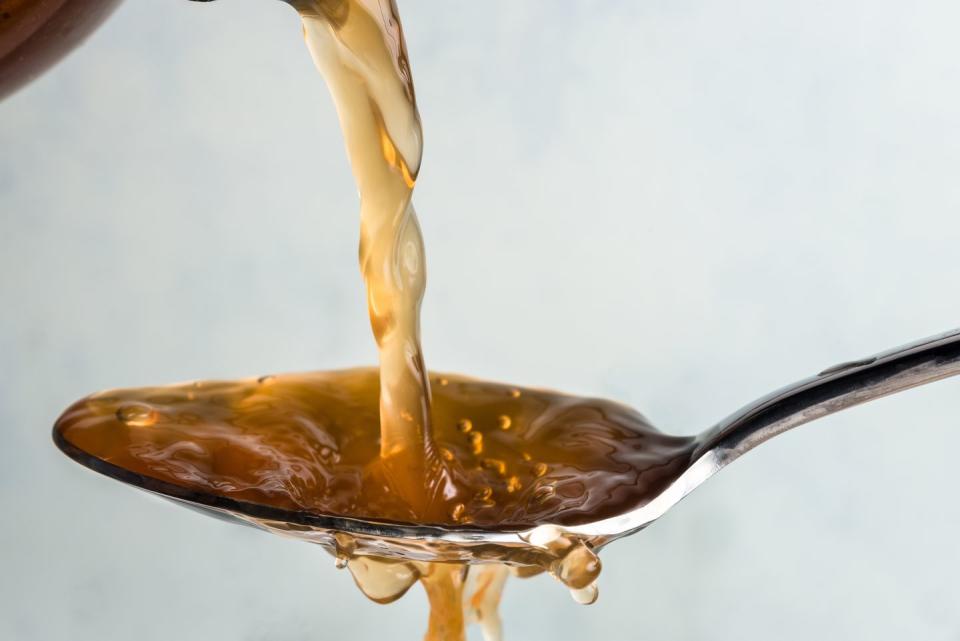
There’s a reason people are obsessed with apple cider vinegar for weight loss. Some research shows that it may have very modest weight loss benefits. For instance, in one 2009 study, researchers had 144 obese adults drink a placebo or 1 to 2 tablespoons of apple cider vinegar (ACV) daily for 3 months. They found that people who downed 2 tablespoons lost nearly 4 pounds, while those who sipped on 1 tablespoon dropped 2.5 pounds. The placebo drinkers? They actually experienced a small weight gain.
“One theory is that the acetic acid in the vinegar produces proteins that burn up fat,” explains Pamela Peeke, MD, MPH, professor of medicine at the University of Maryland and author of Fight Fat After 40.
But again, there are very few solid studies that deem apple cider vinegar as a magical weight loss elixir. The drink can, however, be a decent addition to your routine if you’re already eating healthy and exercising frequently. Some research shows that people who sip on ACV may experience smaller blood sugar spikes after they eat, which can help you manage cravings. If you can stand the taste and want to try it, just be sure to dilute a tablespoon or two in 8 ounces of water, since ACV has a high acidity that can burn your throat and damage your teeth.
Get fussy about fiber
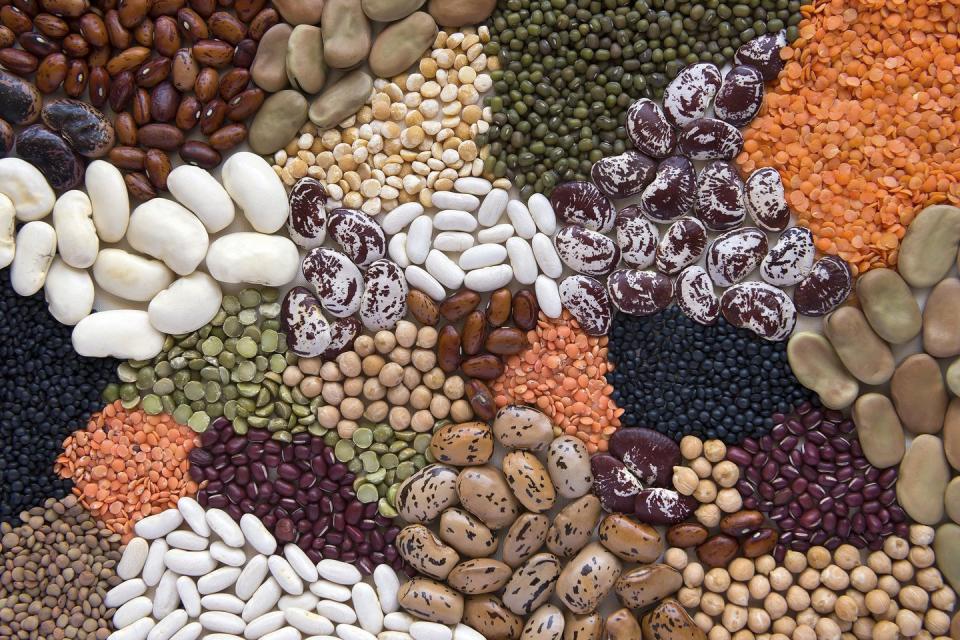
As in, make sure you’re eating a lot of it. In a 2012 study published in Obesity, people who increased their soluble fiber intake by 10 grams a day (which you can easily get in 1/2 cup of black beans and a small apple) reduced visceral fat by nearly 4 percent after five years.
But you’ll likely experience some benefit before then. Fiber helps slow down your digestion and requires more chewing, which helps signal to your body that it’s full, keeping your hunger in check throughout the day. One small study published in Food & Nutrition Research actually found that men who ate meals rich in high-fiber foods, like beans and peas, felt more satisfied than those who focused only on protein-rich foods, like pork and veal. Adult women should aim to eat 25 to 28 grams of fiber per day.
Skip the booze

To lose weight, you simply have to consume fewer calories-but that can be tough when feelings of hunger start creeping in. One good plan of attack: ditch the empty calories that don’t serve your goals so you can make more room for the foods that do. This includes all sugary drinks (like soda), but booze is a big one.
Research finds that drinking frequently-even if it’s a moderate amount-can set you up for excess pudge. Not only do the beverages themselves contain unnecessary calories, but once you start sipping too much, your inhibition also plummets, according to one 2016 study. The result? You’ll have a hard time resisting that late-night slice of pizza.
Cook your own meals

Spending more time in the kitchen can help you shed belly fat, as long as you’re cooking with the right foods, according to one 2017 study. After analyzing data from more than 11,000 men and women, UK researchers found that people who ate more than five homemade meals per week were 28 percent less likely to have a high body mass index, and 24 percent less likely to carry too much body fat than those whole only downed three meals at home.
The researchers explain that people who cook their own meals may simply have other good-for-you habits, like exercising more. However, they concluded that home cooks simply ate more fruits and vegetables (along with a wider variety of foods), have healthier methods of prepping their food, and splurge less on foods high in calories and sugar. No clue where to start? Try these 25 high-protein chicken recipes for weight loss.
Try intermittent fasting
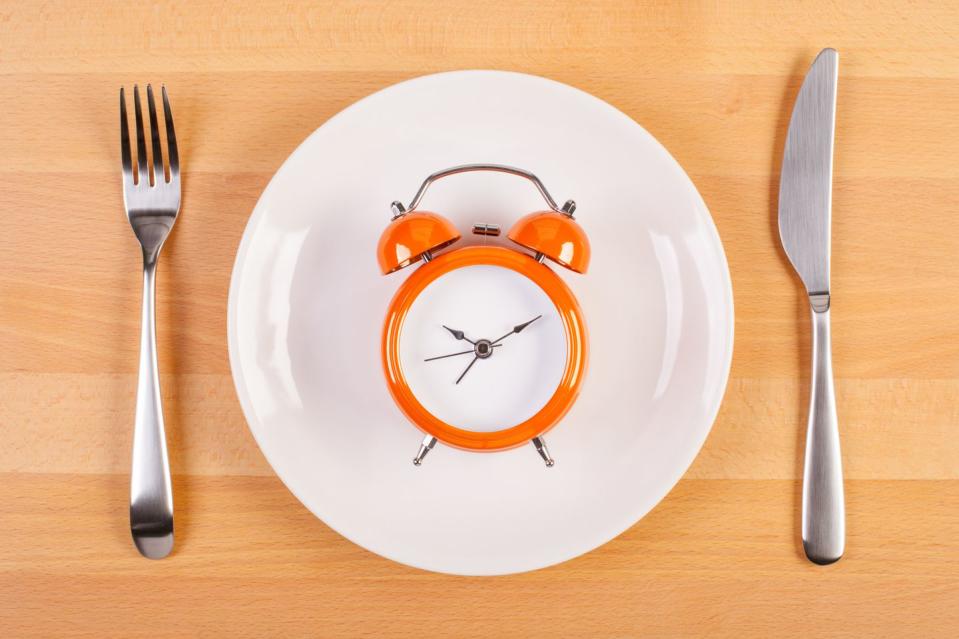
Intermittent fasting has blown up in the past year, but scientists are just starting to figure out how it can help you lose weight. In one study from the University of Illinois at Chicago, researchers compared obese people in a traditional weight loss group and fasting group. For the experiment, the calorie-restricted group simply reduced the amount of calories they ate by 25 percent each day. The fasting group, however, alternated days: they ate 25 percent of the calories they needed one day between 12 and 2 p.m., and then had feast days the next, where they ate 125 percent of their required calories.
The conclusion? Intermittent fasting was just as effective for weight loss as daily calorie restriction. So if you struggle with daily food restriction, fasting might be an easier way to dial back the amount you’re eating without feeling completely deprived. Read more in-depth about how intermittent fasting works (and if you’ll be able to stick to it) here.

Take your belly-busting routine to the next level with Flat Belly Barre
('You Might Also Like',)